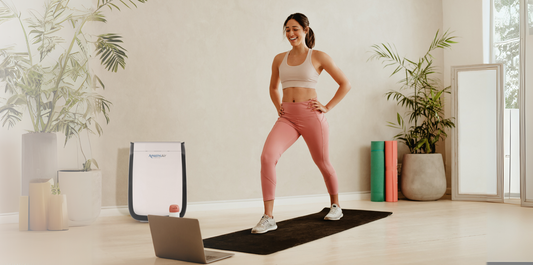There’s always something intriguing about what we cannot see. Take the air around us, for instance. We know it’s there, we breathe it in and out. At times, we even hear it rushing past our ears on a windy day, or feel its force when cycling against a headwind. Now and then, a scent drifts by and reminds us of its presence. Yet the air itself remains unseen, and so do the countless particles it carries. The question is: how do we protect ourselves from the harmful substances hidden within it? Explore the fight against the invisible in our latest blog!
What’s in the air we breathe?
From time to time, we notice things floating through the air, from car exhaust, a dandelion seed, or a swirl of dust. But what exactly is this ‘air’ made of? In its purest state, it consists of around 78% nitrogen, 21% oxygen, and 1% argon. However, the air in populated areas is far from pure. It contains additional gases and pollutants that degrade its quality. An example is fine particles, or particulate matter: tiny, hazardous particles less than ten micrometres in size. For context, that’s about seven times thinner than a human hair. These particles mainly come from sources such as vehicle emissions, wood and tobacco smoke, and the wear of brakes and tyres – all by-products of human activity.”
Indoor air, what’s really inside?
The factors mentioned above mainly concern outdoor air. Yet, on average, we spend around twenty hours a day indoors over the course of our lives. That makes it all the more important to take a closer look at indoor air. But what exactly is it made of? There isn’t one clear answer – it varies widely depending on the room and the household. Ventilation, for instance, plays a big role. If you frequently open your windows and care for healthy indoor plants, chances are your air is relatively clean. On the other hand, smoking or having a fireplace at home can cause the concentration of fine particles to rise sharply.
Effects of polluted air
You might assume that air is simply air. Yet, even without visible warning signs, polluted air can be very harmful. In the short term, it may lead to irritation of the eyes, headaches, or difficulties with concentration. Over time, however, the consequences can be far more severe. Prolonged exposure to fine particles has been linked to cardiovascular disease, asthma, and even certain types of cancer.

Time for action!
So, how can you make sure the air in your home stays clean? A good start is to switch on the extractor fan whenever you cook. Be sure to air out your rooms by opening the windows regularly, and why not visit a garden centre to bring home a few fresh plants? And if you want real peace of mind, consider an AmazingAir purifier. It removes up to 99.99% of harmful substances from the air, helping you breathe freely once more.





